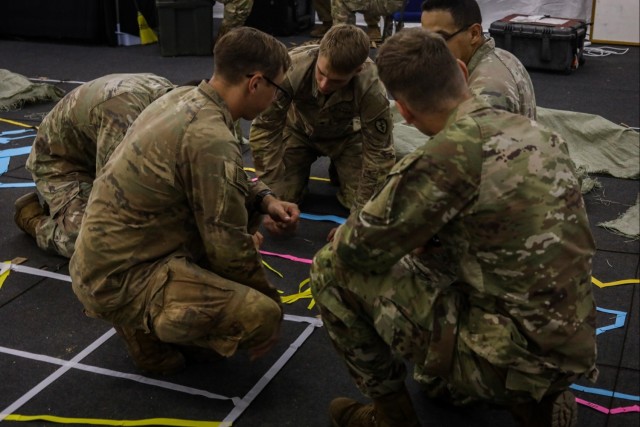
PERAK, Malaysia — In a dynamic display of multinational cooperation, Soldiers from the U.S. Army, Malaysian Army and Australian Defence Force came together to conduct a joint planning session during Exercise Keris Strike 25. The session focused on aligning military planning processes, improving interoperability, and strengthening relationships among the three partner nations.
The exercise, held in Perak, featured collaborative steps from the staff military appreciation process planning process — used by Australian and Malaysian forces — which mirrors the U.S. Army’s military decision making process. During this particular session, staff from each nation jointly executed steps two through six of the staff military appreciation process, corresponding to mission analysis, course of action development, COA analysis — including war gaming, COA comparison and COA approval within the military decision making process.
U.S. Army Maj. Darrell J. Guthrie, an operations officer with 1st Battalion, 27th Infantry Regiment provides insight into the planning steps and their importance.
“Step two is our mission analysis. That phase allows us to fully understand the operational environment.” Guthrie went on to explain: “We assess the terrain, weather, civilian presence, enemy and friendly forces, and other key factors that influence the mission.”

After the mission analysis phase, the teams moved into COA development, generating potential solutions to the mission at hand. This was followed by COA analysis, including a thorough war gaming session — an essential step in the U.S. planning process that examines how a course of action might unfold and prepares leaders for possible enemy reactions.
Staff Sgt. James Sienas, a signal support systems specialist assigned to the 25th Infantry Division, compared the U.S. and Malaysian approaches to war gaming.
“Our war gaming process builds out depth across the plan,” said Sienas. “We look at how different elements interact, anticipate friction points and develop contingencies. That contrasts with the Malaysian approach where war gaming is often done later in the planning phase and serves more as a rehearsal.”

Although COA comparison is a standard step in the military decision making process, it was omitted during this session due to the use of a single course of action. The final step — COA approval — was conducted to affirm the joint plan and prepare for execution.
Understanding the nuances in each military’s planning approach proved to be a valuable outcome of the session. Through side-by-side execution and open dialogue, all three forces gained insight into each other’s strengths, planning philosophies, and decision-making frameworks.
Capt. Juan S. Pilarte, a military intelligence officer assigned to the 25th Infantry Division, emphasized the importance of multinational collaboration and the value of understanding how each nation’s planning process complements the others.

“It’s important because it helps us see what’s similar in our processes — and more importantly, what’s different,” said Pilarte. “By identifying those differences, we can adapt, learn from one another, and ultimately improve how we operate together.”
The cooperative planning exercise not only deepened mutual understanding among the U.S., Malaysian and Australian forces but also reinforced the value of shared decision-making during coalition operations. By integrating their respective planning frameworks and conducting joint war games, the partner nations strengthened trust, enhanced interoperability, and laid the groundwork for future mission success.

Exercise Keris Strike 25 continues to serve as a platform for professional development, cultural exchange, and multinational readiness. Through events like these, participating forces demonstrate their commitment to regional security and long-term strategic partnerships in the Indo-Pacific region.





Social Sharing